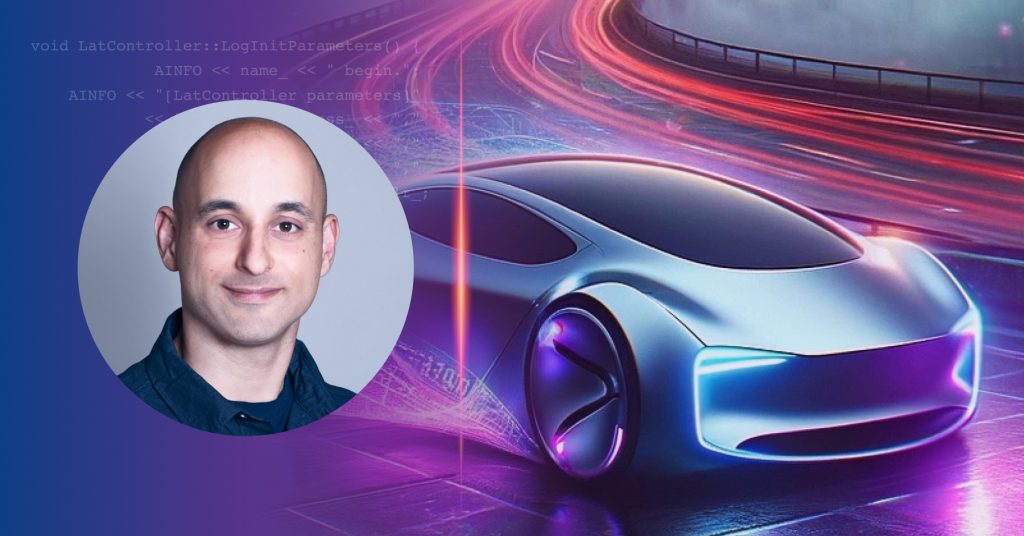Commercial vehicles have a wealth of different requirements compared to passenger vehicles. Whether that’s due to their size, the miles they need to cover, or the complexities of using autonomy in a logistics setting, there’s a lot of work going into future-proofing these vehicles.
Remarkable innovations are taking place in the world of commercial vehicles, driven by their data collection capabilities and the unique challenges they face. In this article, we’ll dive into some of these advancements and what that means going forward.
Driver-assist systems
Just as in passenger vehicles, trucks are fitted with advanced driver assist systems (ADAS). For the most part, these are similar to those in cars with features such as lane-keeping assist and collision mitigation to help improve safety.
However, because trucks are larger and heavier than passenger vehicles, they need additional safety features such as brake hold mode to avoid driver fatigue during long periods of standstill, and auto hold, which is exclusive to the Freightliner Cascadia. This feature actively brakes the truck to a safe stop in its lane rather than letting the truck roll to a halt in the event the driver is incapacitated.
In the future, these features will become even more sophisticated with improvements in both hardware and software, allowing trucks to identify hazards from further away. This will help to improve visibility and safety for truck drivers and the other road users around them.
Autonomous driving and platooning
We’re closer to an autonomous truck than we are to full driverless cars. The reason is that commercial vehicles spend most of their time on the highway, which is a much less complex environment when it comes to the road markings, what’s around, and the types of maneuvers one might want to make. Compared to a passenger vehicle that might be navigating tight city streets or narrow country lanes where other vehicles, pedestrians, or animals might seemingly come out of nowhere, there’s a lot of predictability in driving on the highway.
Many of the tests on autonomous trucks are still being carried out with a driver to take over should something go wrong but we’re closer than we’ve ever been. With new hardware innovations that make the most of LIDAR, cameras, and radar systems, combined with more powerful ECUs, we could see driverless trucks traveling for 24 hours a day. Something a human driver could never do.
While this might not be the reality just yet, there have been some promising results from truck platooning trials. This is where a convoy of trucks is able to follow one another closely to reduce air drag, improve fuel economy, and free up space on the roads. This is automation rather than full autonomy, though, as drivers are still needed when the vehicle needs to break from the convoy and continue to its destination.
Predictive maintenance
The use of artificial intelligence enables fleet managers to get a better sense of when maintenance might be required on a commercial vehicle. Using sensors within the vehicle, as well as AI tools, the maintenance needs of a truck can be accurately predicted. This avoids the need to send technicians into the field, and instead, allows vehicles to be worked on when they are back at base.
By predicting the maintenance needs of a vehicle, fleet managers can ensure those routes are covered by other trucks in order to minimize downtime. On top of this, handling maintenance in this way also improves safety. Tire sensors combined with predictive maintenance algorithms could help avoid blow-outs, for example.
Software innovations
While hardware is important, it’s the software that runs all these smart features. This makes commercial vehicles incredibly complex, so software innovation is needed to ensure the systems run without issue.
Software development tools are needed to ensure that system integration is validated throughout the truck’s lifetime; OTA updates should be performed with zero downtime and without interrupting the truck’s productivity; and continuous software behavior monitoring should also be performed, even while the truck is on the road. This ensures any system malfunctions are detected before they cause vehicle downtime.
Using AI is a vital part of this development and maintenance process and can help detect changes in the software’s lines of code, behavior, and relationships within a vehicle.
This not only speeds up the development process but can also improve the time to market for updates and additional features. Aurora Labs’ Vehicle Software Intelligence helps solve some of the challenges of developing software for commercial vehicles — both now and in the future. If you like to find out more, book a demo here.






 11 min read
11 min read
